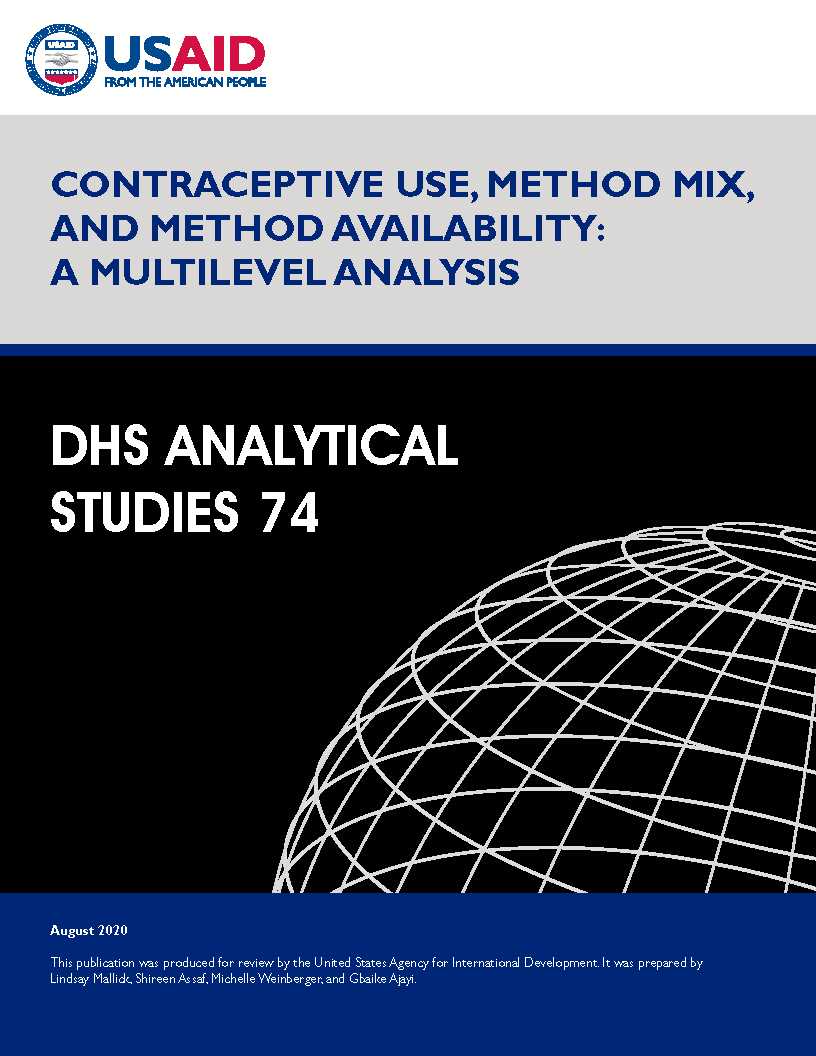There is no printed copy available to order.
Abstract:
Access to a range of contraceptives affords women greater opportunity to find a method that meets their unique reproductive needs, possibly leading to greater diversity in the method mix and increased contraceptive use at population levels. A more diverse method mix may also directly correlate with increased use. However, these relationships have not been concurrently or robustly assessed. We used data from six countries with both recent Demographic and Health Surveys (DHS) household surveys and Service Provision Assessment (SPA) facility surveys conducted within 2 years of each other. The analysis included data from women age 15-49 and health facilities that provide family planning (FP) services. We examined the subnational relationships between modern contraceptive prevalence (mCP), balance of methods in use, availability of FP services and mix of methods (at least one short-acting, one long-acting or permanent method, and one nonhormonal method) provided. In Haiti and Malawi, where SPA surveys are censuses that enable linking household and facility data by household clusters, we conducted multilevel, multivariable logistic regressions, applying a novel method for approximating level-weights (individual- and cluster-level) to estimate the contribution of community-level factors to an individual outcome (use of FP).
The subnational analysis showed that the relationships between mCP with diversity in the method mix and method availability, as well as relationships between method mix and method availability, vary by country; many countries showed minimal or no evidence of associations. However, in Senegal, we found expected relationships between greater mCP, more facilities with FP, and a more balanced mix. A more balanced mix was also associated with a greater number of facilities with a mix of methods. Among rural women in Haiti and Malawi, after controlling for other factors, there were marginally significant, modest (20%) increases in the odds of using FP if a woman lived in a cluster with a high number of facilities that offered a mix of methods compared with women living in areas with a low number of facilities with a mix of methods. In both countries, the odds of using contraceptives also increased if there was some community distribution or mobile outreach versus none. In urban Haiti, the odds were nearly twice as high. Although relationships between method availability, method use, and method mix are complex, method choice should continue to be a central tenet of rights-based FP to ensure that women have access to the methods that meet their needs
